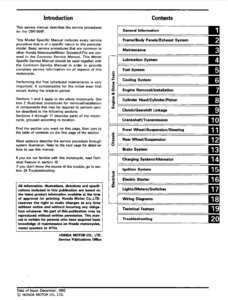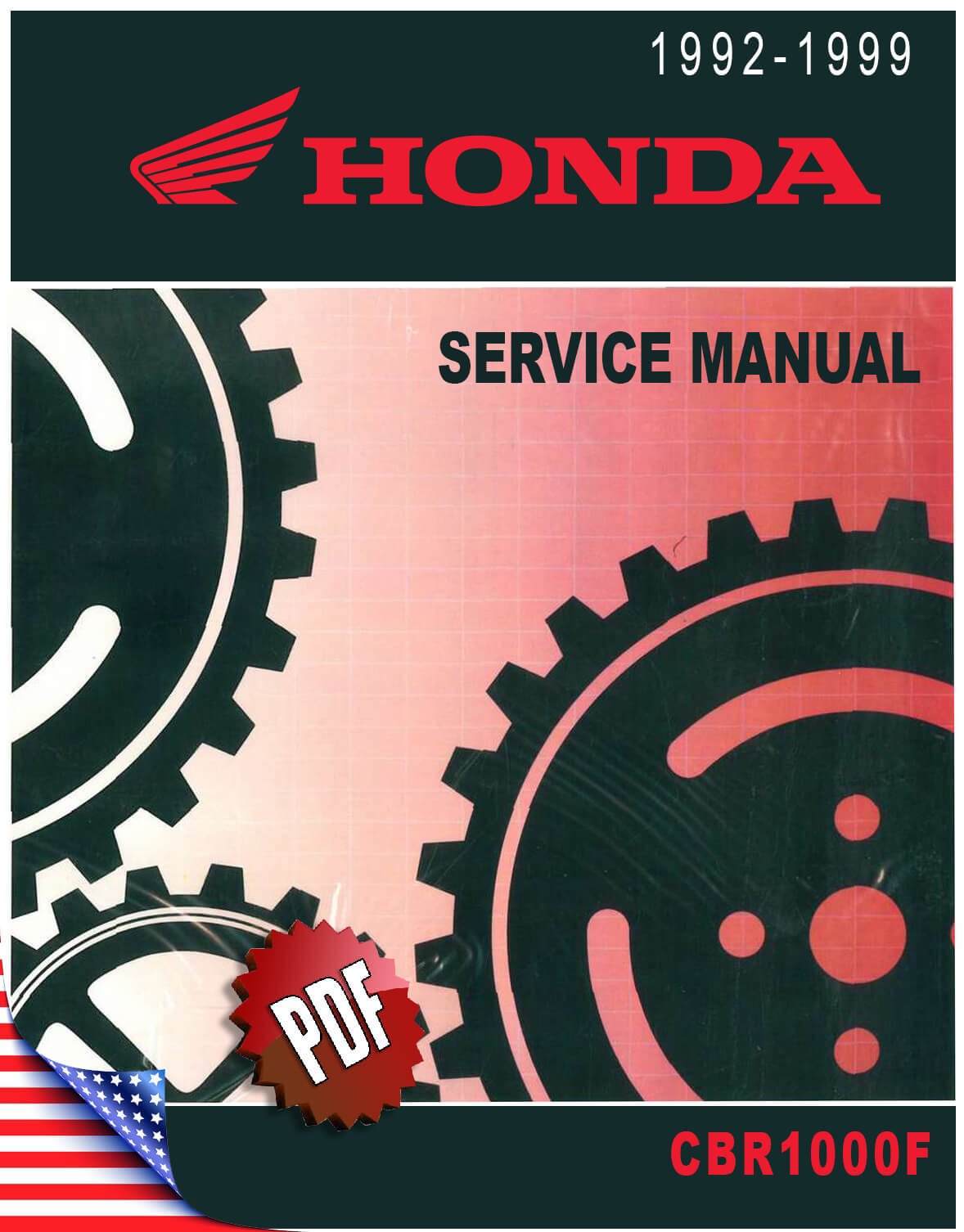Complete PDF version of the Service Manual for the Honda CBR1000F 3rd gen. A MUST for every CBR1000F owner.
Download: Immediately after payment!
OEM Original factory workshop manual.
Models covered by this manual: 1992-1999
Number of pages: 275 pages
Table of contents:

This PDF repair manual can be downloaded right after the payment process in complete, on the device of your choice. You will also receive the download link by email along with your receipt.
We do not offer printed manuals, for the following reasons:
- it is more eco-friendly to use a digital version
- your manual never gets dirty or greasy
- you can always choose to print the specific page(s) you need to work on your bike
- you receive your manual immediately after payment
- it is searchable

Honda CBR1000F
The Honda CBR1000F Hurricane is a sport touring motorcycle, part of the CBR series manufactured by Honda from 1987 to 1996 in the United States and from 1987 to 1999 in the rest of the world. It is powered by a liquid-cooled, DOHC, 998 cc (60.9 cu in), 16-valve inline-four engine. The CBR1000F, along with the CBR750F and CBR600F, was Honda’s first inline four-cylinder, fully-faired sport bike.
Model history
Manufactured from 1987 to 1996 in the U.S. to late 1999 in the rest of the world, the Hurricane went through only three major revisions. In 1989, the bike received a cosmetic makeover with a complete redesign of the front fairing, improvements to the bike’s front suspension, larger tires were added to help cope with the bike’s heavy weight and to accommodate radial tires, improvements were also added to the bike’s cam chain tensioner in an attempt to remove the annoying cam chain rattle some riders had reported. The 1989 model also had its power slightly increased, and it gained weight.
In 1992, the bike’s looks were overhauled with a more streamlined and modern looking bodywork added. The biggest change was the introduction of DCBS, Honda’s dual combined braking system. Honda’s first street motorcycle with a combined braking system (then called Unified Braking) was the 1983 Gold Wing GL1100. This system was derived from a 1970s RCB1000 world endurance race bike. The DCBS system was introduced to assist rider braking where the front brake lever operates two of the three pistons on the front calipers but also proportionally applies pressure to one piston of the rear brake caliper, while using the rear brake will engage one piston in front calipers and two pistons on the rear. Since then DCBS has evolved into a very popular addition to many Honda touring motorcycles. No major changes were made after 1992. A touring model was briefly launched that offered a larger screen and hard panniers.
The CBR was weighed by Cycle World at 259 kg (572 lb) tank empty and 276 kg (609 lb) wet for California model. Honda claims a dry weight of 249 kg (549 lb), and 273 kg (602 lb) wet, The seat is 780 mm (31 in) high and the wheelbase is 1,505 mm (59.3 in). The engine is housed in a steel box section perimeter frame, air-assisted 41 mm telescopic front forks and an adjustable monoshock at the rear. The front brakes are twin 296 mm discs using three piston Nissin calipers on later models (two piston calipers 1987-88), the rear is a single 256 mm disc, and DCBS are used on all models after 1992.
Engine
The CBR’s engine went largely unchanged throughout its history. It uses the standard Honda inline four-cylinder 998 cc, four-stroke, DOHC, 16-valve, liquid-cooled power plant running four 38 mm CV carburetors and has a bore and stroke of 77 mm × 53.6 mm (3.03 in × 2.11 in). It produces 135 bhp (101 kW) at 8600 rpm and 69.4 ft⋅lb (94.1 N⋅m) (rear wheel) of torque at 6500 rpm.
It had a 0 to 1⁄4 mi (0.00 to 0.40 km) acceleration of 11.19 seconds at 121.24 mph (195.12 km/h). The fuel tank holds 22 litres (4.8 imp gal; 5.8 US gal).
Discontinuation
From 1992, Honda introduced the Supersport series with the Tadao Baba developed Fireblade, which took sales from the heavier CBR1000F.
The model was hence discontinued in the USA from 1996 as the CBR1100XX was released, but continued to sell in Asian and European markets until Honda finally ended its run in late 1999.
Source: Wikipedia

